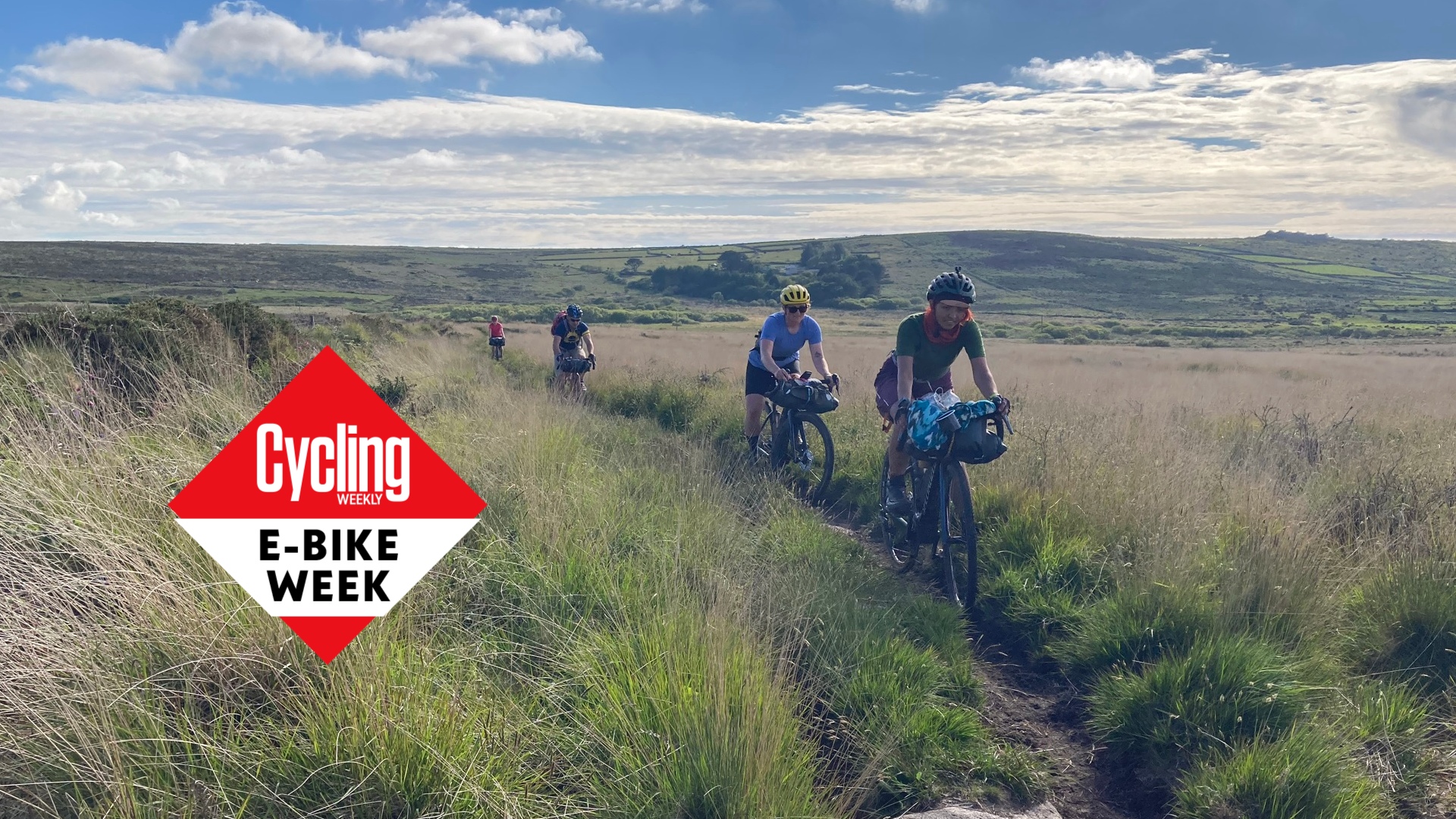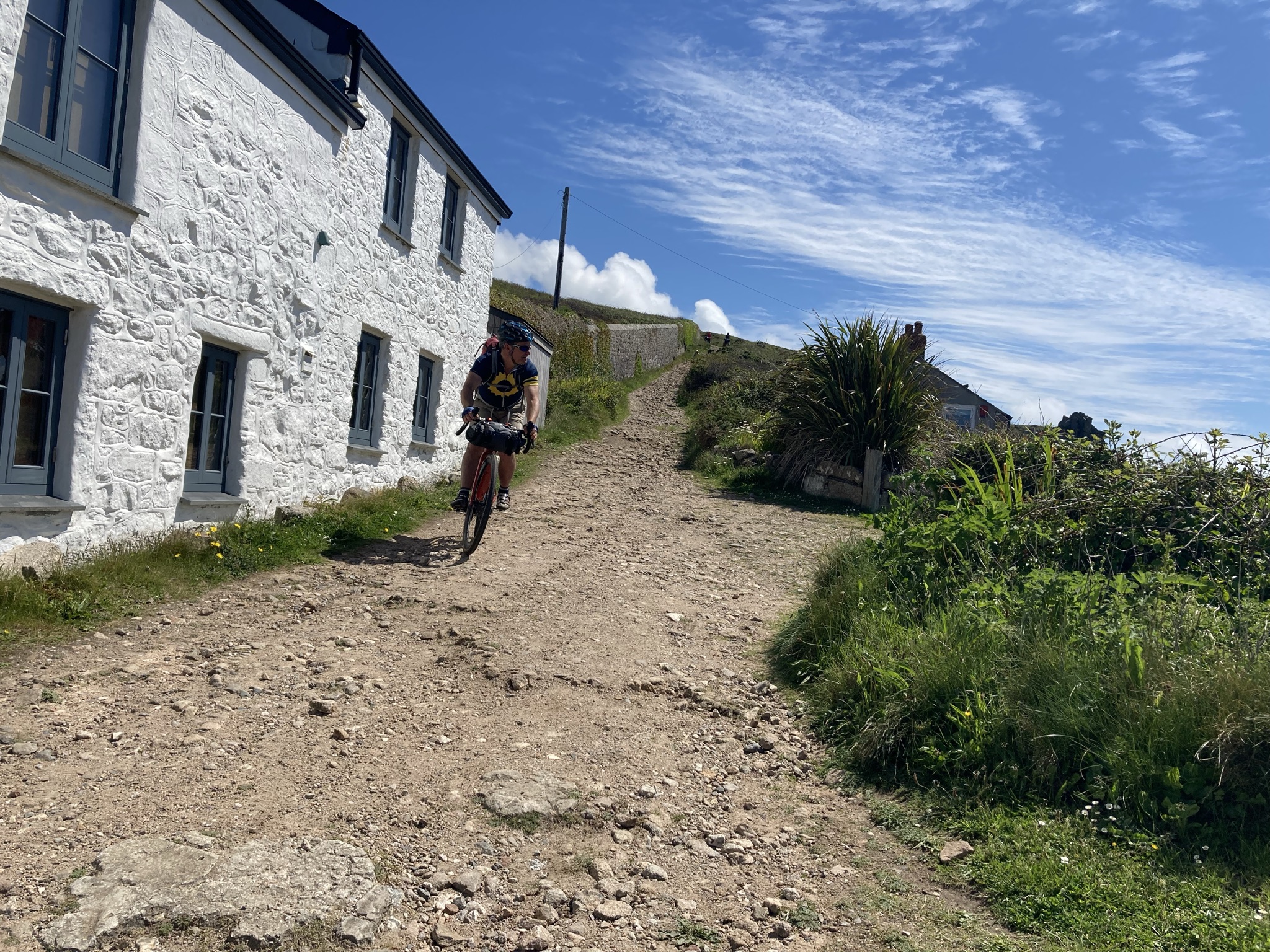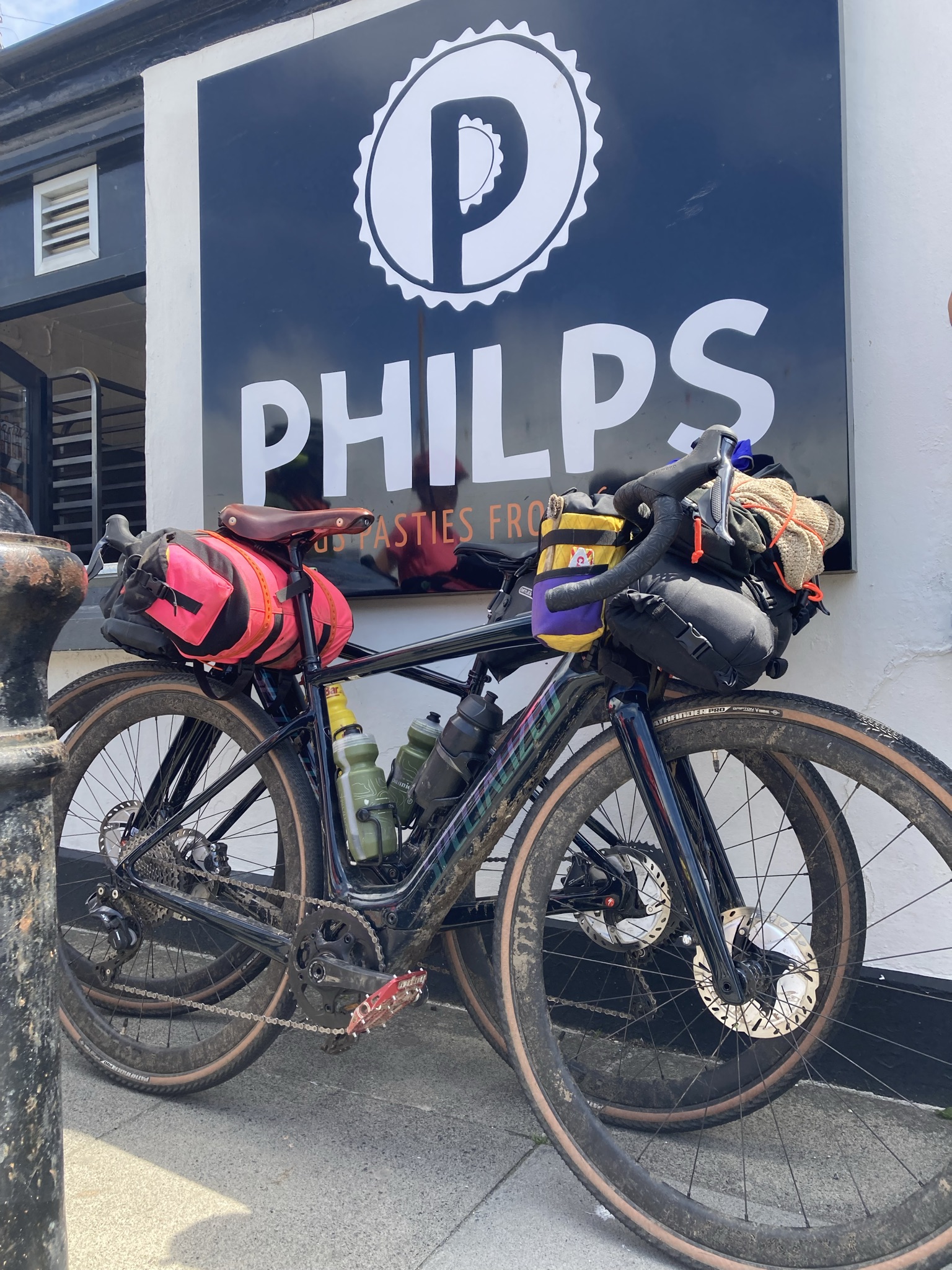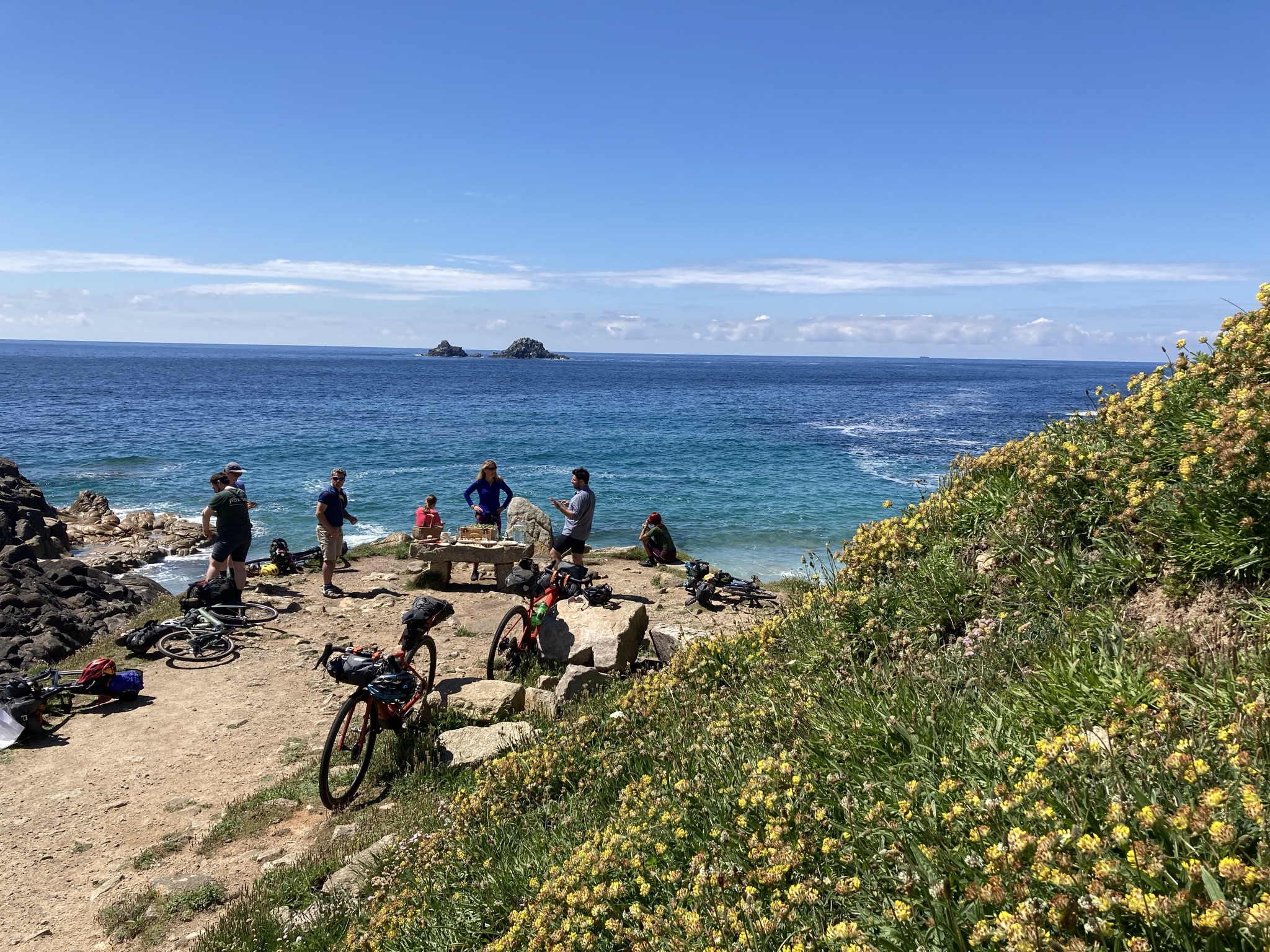
“TURRRRRRBO!” laughed Katherine, as she shot up the steep Cornish slope on her laden gravel bike. Our small group of different riders, strangers until a couple of hours ago, followed suite with broad grins and the sort of effort you’d imagine elite riders would have when the gradient goes up.
We matched pace and stayed together until we reached the descent down to Cape Cornwall, when the differing descending skills came into play on the rough and ready bridleway down to Britain’s second cape.

This was day one of three along the unsupported inaugural ride of the West Kernow Way, a 230km route around the hilly peninsulas of the UK's Land’s End and the Lizard. It was my first real experience of an e-bike and it was a revelation: e-bikes are great for bikepacking.
Since then I’ve toured around Norfolk on the Rebellion Way with another group on e-bikes, and had my first impressions re-confirmed. Norfolk might be notoriously flat, but headwinds and long days with a group of experienced and less-experienced tourers meant we all rode together from start to finish.
That’s the real magic of e-bikes for bikepacking trips, they eliminate that elastic band effect you get in group rides. Everyone will have had experience of this. As soon as a headwind blows, or hill begins, gradually the group begins to elongate and split, usually to recover at the summit with the first to arrive all fresh and itching to go as the last rolls to a halt hoping for a breather.
With e-bikes, that effect only happens on the descent and with it, I’d say less psychological scarring for the lanterne rouge, which only helps preserve harmony on tour.
Whether you or your companion are having an off-day, or you’re riding with someone whose ability surpasses yours or vice versa, e-bikepacking allows groups of people to ride together who might struggle normally.

I put a call out on Instagram to ask for people’s experiences about e-bikepacking, and received rave reviews of how e-bikes enabled rides for everyone from partners and pals to intergenerational and those recovering from illness to happen.
Cycling photographer Sam and teacher Amy Voden from South Devon took an e-bike out for a bikepacking trip in the Somerset levels for the first time last year. Sam rides regularly and was full of praise for how his wife’s ebike enabled the trip.
“Until getting the ebike Amy didn't feel confident enough to come along, but having it opened up a whole new world! We did 100k over two days around Somerset and used a Warmshowers host. I know a two day plod around Somerset isn't the epic some might try with their ebikes but the main takeaway is it put Amy and I on a level playing field.”
Elain Jackson (50) feels the same whether riding with her husband, her 73 year old aunt or 77 year old father in Scotland. “E-bikes gives you confidence to do more and have fun,” Jackson told me. Amen to that!
It’s not just individuals, but also tour operators which are dipping their toes into ebikepacking. Stefan Amato runs Pannier.cc which runs trips from Scotland to Kyrgyzstan, and he’s a fan.
“If e-bikes open up cycling and active travel to more people that otherwise wouldn’t bikepack, then all the better. I’ve seen this in action on our Pannier trips – whether people have slight injuries or anxiety about ‘keeping up’ with the rest of the group, but want to join friends on challenging bike trips. It’s only positive.”
Banishing range anxiety

Both Voden and Jackson highlighted to me the obvious and understandable issues when e-bikepacking: range anxiety and the need to charge.
There’s no two ways about it, e-bikes and their need to recharge will take some of the spontaneity out of your trip. By necessity you have to plan your route more thoroughly, factoring in stops at locations where you know there is accessible power which are well within your bike’s range.
1) Pack light! Just because you’ve e-assistance, doesn’t mean the kitchen sink should come. The more weight you carry, the quicker the battery juice will disappear.
2) Turn off the e-assist. Modern e-bikes, especially ones you might bikepack with ride surprisingly well when the motor is turned off. Conserve power on those flats with tailwinds and descents. Changing between powered riding and not is also a nice way to break up the ride.
3) More advanced e-bikes have apps which allow you to adjust your e-assistance to lower levels than they’re factory settings. It’s worth spending some time working out what level you need and adjust accordingly.
4) Avoid using “turbo” and other top settings unless you absolutely need to. The “economy” mode will generally serve you well – and even on an e-bike there’s no shame to embrace the Rough-Stuff Fellowship mantra of “never going for a walk without your bike”!
5) Avoid riding in the cold months. If you ever needed an excuse to be a fair weather bikepacker, an e-bike offers it! The cold will zap your battery, especially if leaving it outdoors overnight. If it is unseasonably frosty though, and you can remove your battery pop it in your sleeping bag to help keep it insulated. It might be uncomfortable, but it should save you a few bars.
Admittedly this isn’t too difficult on a densely populated island like the UK, but with battery technology as it currently is, truly remote trips on e-bikes are not yet feasible. Also, unless you’re planning on hiring overseas or can get to your destination overland, you’ll have to rule out foreign adventures with your bike due to airlines’ no e-bike carriage policy.
Planning is paramount, as to keep the juice flowing you’ll need campsites with power, roofed accommodation and sit down meal stops. Given some businesses’ unfamiliarity with e-bikes and the risks of charging, a good rule of thumb will always be to check in advance with your intended charge spot whether they will allow you to or not.
Hopefully over time, and particularly in popular spots, we’ll see more independent charging points emerge like those like in the town of Betws y Coed, Wales, part of Eryri National Park. In the wider UK, which is still yet to realise the benefits of the cycle tourism, we’ve some way to go.
E-bike chargers are also pretty weighty bricks. The risk of fire is greatly increased by using incompatible chargers, which means if you’re ebikepacking in a group, then ideally you’ll all have the same make of bike.
Hopefully industry will read and take note, as I’m sure one step to make things easier would be a universal charging system for e-bikes. Not only would this help eliminate the need to carry chargers for riders but it should ultimately reduce e-waste. A universal charging system might also assuage concerns of businesses concerned about ebike fires given the risks with using incompatible charging systems.
E-bikepacking is definitely possible and e-bikes are already making bikepacking more accessible in the same way they’re doing for cycling. For the curious give it a go – but probably best to start on small local trips before heading off on the big one! And for those thinking “Not just yet”, take comfort that as technology improves making lighter more affordable bikes that can travel further on a single charge, we’ll still be able to continue our biking adventures long into our twilight years.







